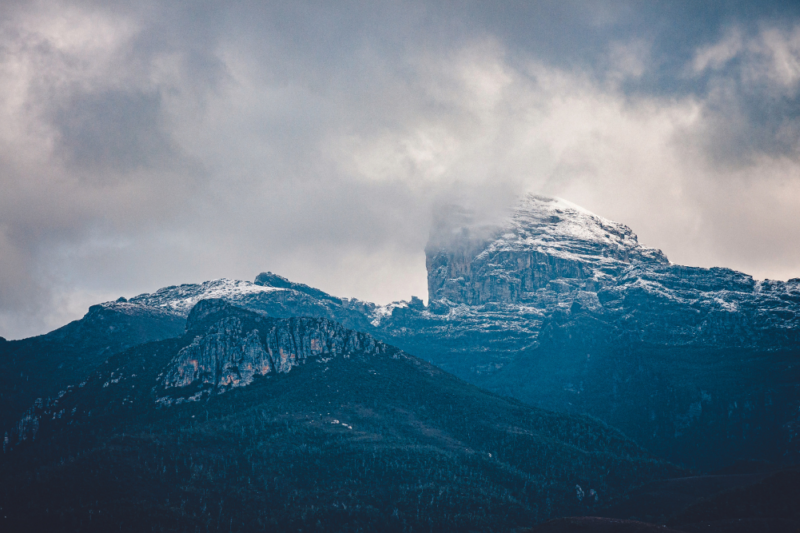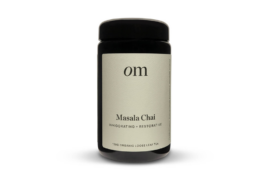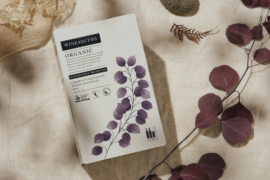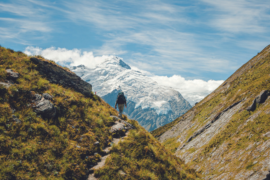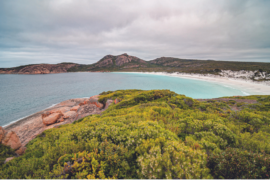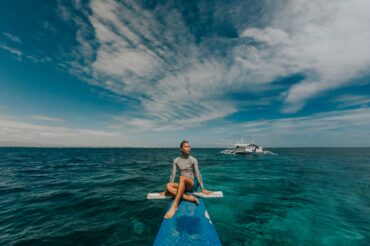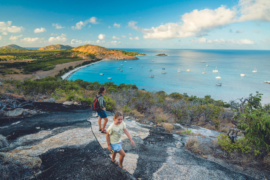Take a Journey Through Wild West of Tasmania
The island of Lutruwita, otherwise known as Tasmania, was discovered by the Palawa people over 40,000 years ago. Here we take a journey to the wild west of Tasmania and discover the rugged, raw and stunning environment.
Poised above a verdant tapestry of alpine forests and silvery tarns, Cradle Mountain beckons me onto its rugged granite slopes at dawn. Past ice-blue Dove Lake, mirroring the mountain’s famously fluted summit, there are hidden plateaus of buttongrass cradling sparkling pools, and the chance to glimpse wild things. This is what lures my sleepy band of walkers onto the trail while we are barely awake, and all this early-morning splendour catches us by surprise. There’s no denying the steepness of this trail, or the wild, precarious scramble that finally lands us breathless on the mountain’s windswept top, but this all-day adventure endures in my mind as one of my best days on Earth.
From that lofty peak that pulls hundreds of gazes skyward every day, the views are nothing short of sublime. Laid out before me and stretching endlessly in every direction are the alpine heathlands, deep, forested valleys and lofty glacial lakes that stud Cradle Mountain–Lake St Clair National Park. In Tasmania’s most famous wilderness we spot the tail end of a spotted-tail quoll, disappearing swiftly from sight, and whenever I lift my gaze from my muddy, trudging boots I marvel at fresh vistas of broody bluffs and stark rock spires.
The turnaround point for Cradle Mountain’s euphoric summiteers is but the beginning for far hardier hikers. Those setting out to tackle Tasmania’s truly classic Overland Track hike for five or six days before finally shaking off their packs on the shores of Lake St Clair, 80km to the south. It’s a grand undertaking but it’s not the only route south, so I drop down the trail through Dove Lake’s Ballroom Forest of rare King Billy pines, pile everyone back into the car and drive west.
Around two metres of rain falls annually on Cradle Mountain and much of the deluge hits the west coast first. This makes camping a fleeting summertime indulgence, but the good news for Earth-conscious travellers is that there’s an excess of tiny homes, eco-accredited cabins and rustic waterfront shacks to welcome you in from each chilly day’s exploring. The first of these awaits on the Pieman River at Corinna.
Rainforest gold
It takes just an hour to drive from Waratah to Corinna, but only when the bitumen ends at Savage River do I begin to feel blissfully remote. At the foothills of the Tarkine rugged mountain ranges — that perilously threatened wilderness where Tasmanian tigers are fabled to roam still — I follow the river valley downstream past buttongrass plains to reach Corinna in the dying light of day.
A former gold-mining town famous for unearthing Tassie’s largest, 7kg golden nugget, Corinna’s history mirrors that of so many Australian gold towns. Its heyday was fleeting, but a revival of sorts has taken place. Today, the town’s cluster of riverside miners’ shacks awaits a fresh breed of prospector who comes seeking solitude and serenity on walking trails and Pieman River paddling adventures.
Corinna’s makeover as a faraway forest retreat might seem incongruous if it were not for the town’s utterly serene location. With an hour to spare at dawn, I set out along the Whyte River Track that loops upstream along the Pieman River. Moving briskly, my thoughts bubbling away, I spook pademelons and search for platypuses that emerge from the tannin-hued depths through telltale bubble streams. There are a dozen walking trails to explore out of Corinna, some offering grand vistas and others that showcase macro scenes of mossy Huon pines and trickling streams. Cottage stays in this recycled mining town start from $478 for two nights.
Towering dunes
We ride the vehicle ferry across the river with Zeehan’s wild Henty Dunes on our minds. Forming an ever-shifting white sand desert, these are Tassie’s largest dunes, extending from Trial Harbour all the way south to Macquarie Heads in Strahan.
I watch teenagers deftly surfing sandboards and toboggans down the 30 metre-high slopes. Abandoning all grace, I throw myself over the lip of sand with a crazy squeal, stumbling and tumbling, and spending all day shaking sand out of my pants.
Like most Tasmanian towns, Zeehan’s backstory begins with the explorer Abel Tasman, whose tiny brig, the Zeehaen, lends its name to this outdoorsy town. When the weather is good, there are plenty of ways to discover Zeehan. Tackle the 90-minute climb to the top of Mt Zeehan, or head for Lake Pieman with fly-fishing rods in search of trout. But when the day turns drizzly, we make
a beeline for Strahan, a 30-minute drive down the road.
On the water
Stoic and stately, Strahan might be a faraway post, but it offers more than its fair share of top Tassie things to do. Touristy, yes, but with good reason, because boating across Macquarie Harbour is a pretty fantastic way to spend a day. After a long, hot shower to put the Henty Dunes behind me, we take a river cruise up the magical Gordon River to wander through centuries-old rainforest trees protected at Heritage Landing.
The choice of tours pulls at us, but a cruise to Sarah Island revives a poignant, distinctly unsettling slice of convict history. From this primitive, rugged base, convicts first settled Strahan’s remote western port in 1822, logging Huon pine, constructing boats and kick-starting a prosperous port that by 1900 was Tassie’s third largest. The guided narrative to Australia’s worst convict settlement is nothing short of horrific, and the tales of escape and survival are miraculous.
The other big-ticket attraction is a steam rail journey aboard the West Coast Wilderness Railway, climbing seemingly impossible inclines, and fording deep gorges and wild rivers for vistas you’ll never experience from the road. There are fishing charters and twilight penguin-watching cruises, and the town’s historical waterfront is lined with restored 19th-century terraces housing a tempting string of cafés, restaurants and bars.
We order takeaway fish and chips and drive to Hells Gate at the end of Tasmania’s longest Ocean Beach to watch not whales and dolphins but my favourite bird, the short-tailed shearwater. From January to March, these misnamed migratory “mutton birds” return in great flocks at dusk. With
a distinctive call that’s lyrical and proud (and the only birdcall I can mimic), they sing out to their lifelong mates across vast colonies of birds, and retreat to their burrows.
Back in Strahan, a bout of poor weather sends us indoors to indulge in a rather greedy excess of fireside vinos and King Island brie. When we finally get moving again, we balance things out on a handful of short, warm-up, national park wanders.
Wild river vistas
For 56km the Lyell Highway cuts through the rainforested Franklin–Gordon Wild Rivers National Park, showcasing fleeting magnificent roadside scenes. A drive-by doesn’t do this wilderness justice at all, and with Lake St Clair less than an hour’s drive away there’s time for a closer look. The all-abilities boardwalk to Nelson Falls couldn’t be more captivating, carved through deciduous beech forest and carpeted with ferns. It takes just 10 minutes to reach the amphitheatre and its shimmering cascade, but the birdlife here, the quietude and the play of light through the forest could hold unhurried explorers for far longer.
Big-picture vistas await 25km further east at the end of a 20-minute climb to Donaghys Hill Lookout. Pull off the highway, park and hit the trail, climbing through a dewy myrtle forest of celery top pines and gum-topped stringybarks, and beneath towering fern trees to reach the buttongrass-topped Donaghys Hill. Here, Frenchmans Cap’s distinctive white quartzite summit crowns a scene of jagged granite peaks that fall breathlessly away to the Collingwood and Franklin Rivers far below. The entire scene is remarkably grand, and entirely invisible from the roadside (2.2km return).
But to get close to the famous Franklin River, push 10km on to a peaceful picnic spot that remembers Australia’s largest ever conservation battle. The 1980s proposed damming of the Gordon River, below its confluence with the Franklin, mobilised environmental supporters countrywide in a way that had never happened before in Australia. It took three years, a High Court intervention and the imprisonment of Dr Bob Brown before the Franklin Blockade saved the river. Today, these wilderness areas are still without proper safeguard, so it’s vital to remind ourselves just what is at stake.
Leeawuleena
At the far end of the Overland Track, Lake St Clair is a restful place to end our wandering. Its Indigenous name Leeawuleena means Sleeping Water, resting as it does beneath a range of poetically named peaks: Mounts Olympus, Orthys, Hugel, Byron and Ida. High above Lake St Clair, which rates as Australia’s deepest freshwater pool, hikers climb the flanks of Mount Rufus just to see the peak-studded vistas reflected in Lake St Clair far below. It’s a simply stunning scene to witness, and the wander itself, following wombat tracks and blue fairy wrens through deciduous beech forest, reveals lavish natural scenes that overwhelm the senses.
The lofty summit trail to Mount Rufus appeals to hardy hikers, but there are easier walks too. We explore along the lake’s eucalypt-fringed western shore through rainforest to Watersmeet where the Hugel and Cuvier Rivers merge (45 minutes return). Sitting quietly, we spook Bennetts wallabies and Tasmanian pademelons emerging from the undergrowth, and later surprise a wombat ambling along the boardwalk towards Shadow Lake. Wildflowers bloom along the trail in spring and summer — acacias, hakeas, orchids and waratahs — all attracting the most vibrant of birdlife, including strong-billed honeyeaters and yellow wattlebirds, both endemic to Tassie.
Out on the water the exploring continues by kayak and aboard the passenger ferry that provides the most restful way to take in the views. When the weather turns grey, just about everyone retreats with appetites and chilly toes to the Lodge’s organic café and restaurant. We take our questions and curiosities to the national park visitor centre and wander around intriguing historical and natural displays. There are films to view and
a library of books to stick your nose into while lounging on comfy fireside couches.
Over the popular summer walking season, park rangers host free walks, talks and slide shows daily, which really do give your exploring a sharper focus. Accommodation options around Lake St Clair are plentiful, starting with the Lodge, which runs a campground too, the adults-only Pumphouse Point and the Wilderness Hotel a short drive away at Derwent Bridge, which offers more affordable B&B stays.
From the lake, Hobart is a 2.5-hour drive away, so we linger a little longer before the bright lights pull us south. On our final frosty morning we tackle the climb up Mount Rufus to gaze back north towards Cradle Mountain where our wild discoveries first began. Tasmania safeguards so many pristine wilderness areas, but Cradle Mountain–Lake St Clair National Park is both beautiful and accessible, with so many ways to explore and some of the finest accommodation too. Best of all is the road trip that links all your exploring and unearths Tassie’s wild west coast.
Inspired by travels into the world’s unpopulated places, author Catherine Lawson and photographer David Bristow are hikers, bikers, paddlers and sailors who live aboard Wild One, currently sailing through South-east Asia. When not exploring, they write books, and their latest cookbook The Hunger and The Gatherer is available at wildtravelstory.com.
Photography by David Birstow
Article Featured in WellBeing 205
